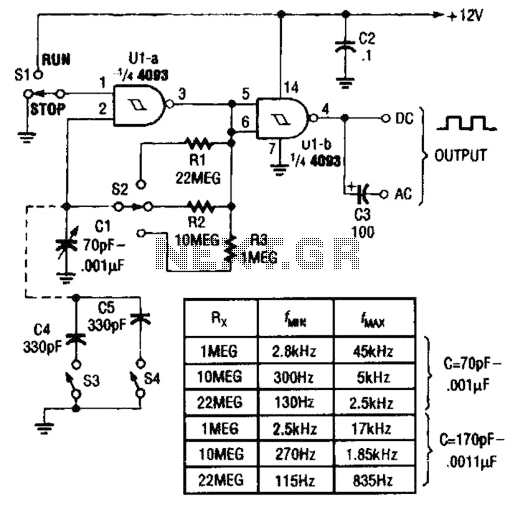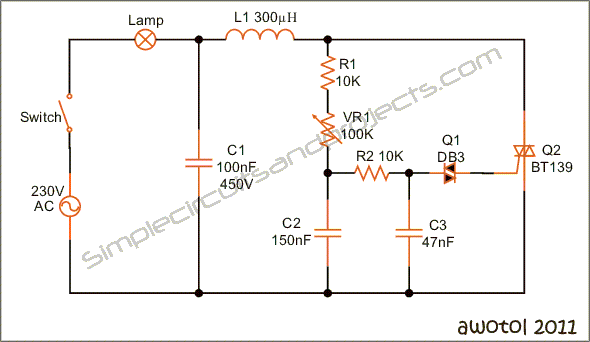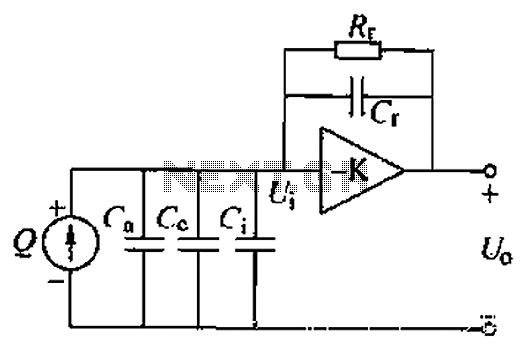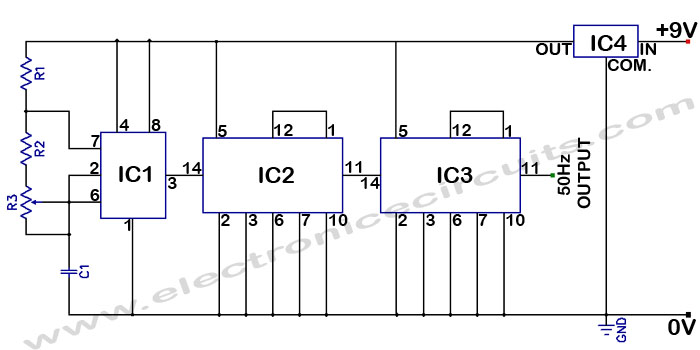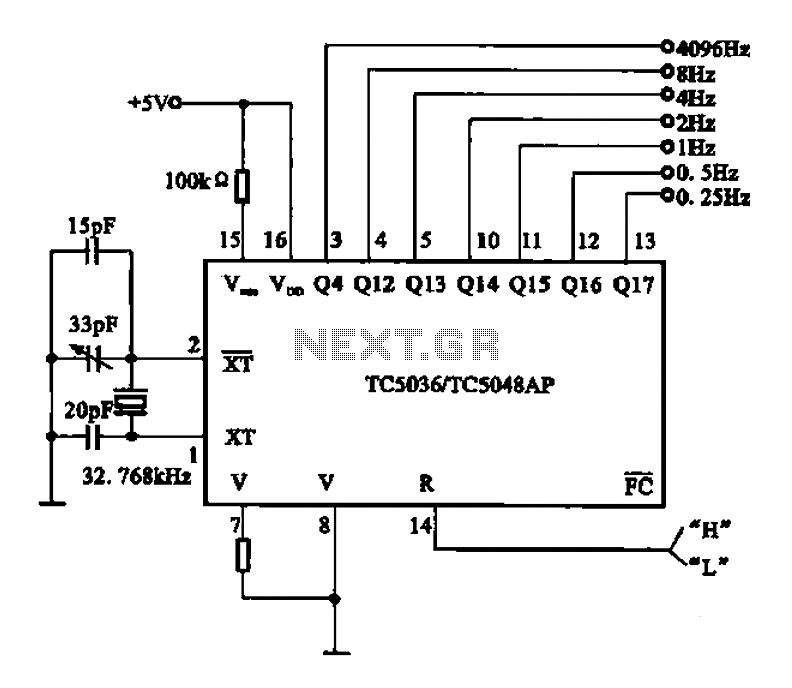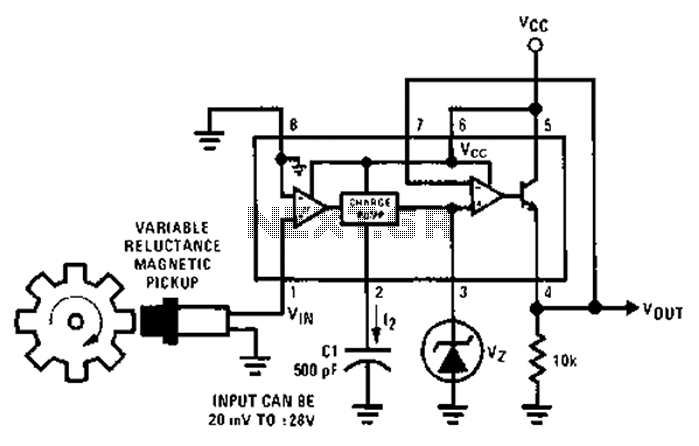
Press light switch double circuit 4
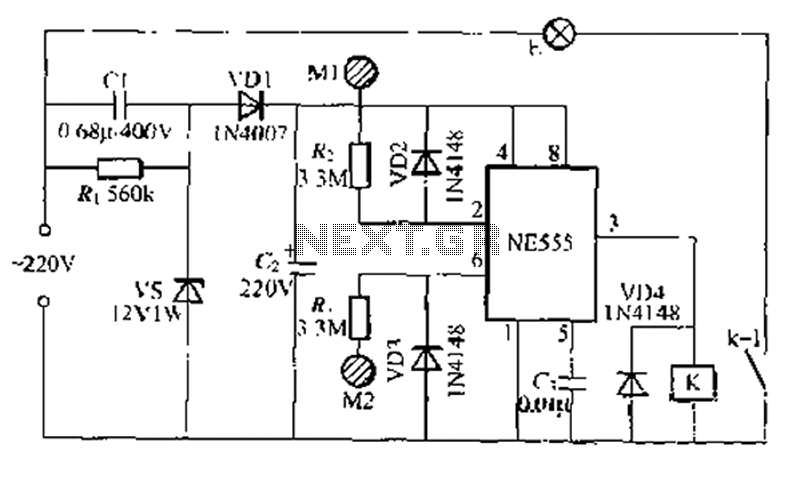
A use NF double touch lamp circuit based on a 55 base design, utilizing switches. It operates with 220V AC and includes a simple composition of a power-saving buck converter in conjunction with a half-bridge circuit. The circuit is designed to allow the lamp to be turned on or off by simply touching the electrode sheet M1. The human-induced noise signal is rectified by diode VD2, which triggers the input terminal of the time base circuit, generating a negative signal that sets the high output. This activates relay K, which powers the lamp. To turn off the lamp, a touch on electrode sheet M2 is required. The signal from the human body is rectified by diode VD3 and serves as the input to the threshold of the time base circuit, resetting the output to low and releasing relay K, thus extinguishing the lamp. The circuit requires components rated for 400V, including high-quality resistors such as metal film types. The relay used is the JZC-22F, rated for DC12V, and the circuit must be properly connected to the AC mains, ensuring correct phase and neutral configurations for reliable operation.
The double touch lamp circuit operates on the principle of capacitive sensing, where the human body acts as a conductor. When a user touches the electrode sheets M1 or M2, a change in capacitance is detected, generating a signal that is processed by the time base circuit. The time base circuit is responsible for timing the duration for which the lamp remains on after the initial touch.
The circuit features two key diodes, VD2 and VD3, which serve to rectify the induced signals. VD2 is critical for converting the AC signal generated by the touch into a usable DC signal for triggering the time base circuit. VD3 performs a similar function for the off command, ensuring that the system can accurately detect when the user intends to turn off the lamp.
Relay K is a crucial component in this design, acting as the switch that controls power to the lamp. The choice of relay, such as the JZC-22F, is significant due to its compact size and capability to handle the DC load required for the lamp. The circuit design must also incorporate safety features, including appropriately rated resistors and capacitors to withstand the high voltage of the AC mains.
The circuit layout must ensure that the phase and neutral connections are correctly configured to prevent malfunction or safety hazards. Proper grounding and insulation are essential to ensure user safety and the reliable performance of the circuit. The inclusion of high-quality components, such as metal film resistors, enhances the overall reliability and longevity of the circuit, reducing the risk of failure due to heat or electrical stress.
Overall, the design of this double touch lamp circuit combines simplicity with functionality, providing an innovative solution for user-friendly lamp control while adhering to safety and performance standards.A use NF, double touch lamp ~ 55 base circuit made of switches. 2ZOV AC by [1-, c:, VDI, vs simple composition of a single power save buck and a half crossing fetters flow regu lator circuit, but also through after C, resistant end-cho of about 1ZV about DC voltage for the time base tU Road electricity. Need to open the lamp, just plain hand touch the Refuse electrode sheet Ml, human induced noise signal after rectified by the VD2 gave time-based circuit trigger input terminal feet into a negative signal to the time base circuit set position, feet high output, relay K to their station suction units accounted for kl contact closure, Chan E electric powered light.
Turn off the lights when needed, just before touch - down beauty electrode sheet M2. Sense of human blood clutter signal rectified by VD3, the time base circuit threshold associative end pin input signal a coin, immediately reset the time base circuit output terminal lost thirty feet low, the relay K release, Chan E electrical flameout. (1. Requests resistant to E r is 400V and poly-ene capacitors, R, R. To use good quality high value resistor, such as metal film resistors will .K available JZC-22F, DC12V power in a small electromagnetic relay, the other element is the special requirements of their lC circuit with AC mains connection, lay phase, neutral position must be shown in Figure pjf, otherwise the circuit is not reliable work properly.
The double touch lamp circuit operates on the principle of capacitive sensing, where the human body acts as a conductor. When a user touches the electrode sheets M1 or M2, a change in capacitance is detected, generating a signal that is processed by the time base circuit. The time base circuit is responsible for timing the duration for which the lamp remains on after the initial touch.
The circuit features two key diodes, VD2 and VD3, which serve to rectify the induced signals. VD2 is critical for converting the AC signal generated by the touch into a usable DC signal for triggering the time base circuit. VD3 performs a similar function for the off command, ensuring that the system can accurately detect when the user intends to turn off the lamp.
Relay K is a crucial component in this design, acting as the switch that controls power to the lamp. The choice of relay, such as the JZC-22F, is significant due to its compact size and capability to handle the DC load required for the lamp. The circuit design must also incorporate safety features, including appropriately rated resistors and capacitors to withstand the high voltage of the AC mains.
The circuit layout must ensure that the phase and neutral connections are correctly configured to prevent malfunction or safety hazards. Proper grounding and insulation are essential to ensure user safety and the reliable performance of the circuit. The inclusion of high-quality components, such as metal film resistors, enhances the overall reliability and longevity of the circuit, reducing the risk of failure due to heat or electrical stress.
Overall, the design of this double touch lamp circuit combines simplicity with functionality, providing an innovative solution for user-friendly lamp control while adhering to safety and performance standards.A use NF, double touch lamp ~ 55 base circuit made of switches. 2ZOV AC by [1-, c:, VDI, vs simple composition of a single power save buck and a half crossing fetters flow regu lator circuit, but also through after C, resistant end-cho of about 1ZV about DC voltage for the time base tU Road electricity. Need to open the lamp, just plain hand touch the Refuse electrode sheet Ml, human induced noise signal after rectified by the VD2 gave time-based circuit trigger input terminal feet into a negative signal to the time base circuit set position, feet high output, relay K to their station suction units accounted for kl contact closure, Chan E electric powered light.
Turn off the lights when needed, just before touch - down beauty electrode sheet M2. Sense of human blood clutter signal rectified by VD3, the time base circuit threshold associative end pin input signal a coin, immediately reset the time base circuit output terminal lost thirty feet low, the relay K release, Chan E electrical flameout. (1. Requests resistant to E r is 400V and poly-ene capacitors, R, R. To use good quality high value resistor, such as metal film resistors will .K available JZC-22F, DC12V power in a small electromagnetic relay, the other element is the special requirements of their lC circuit with AC mains connection, lay phase, neutral position must be shown in Figure pjf, otherwise the circuit is not reliable work properly.
